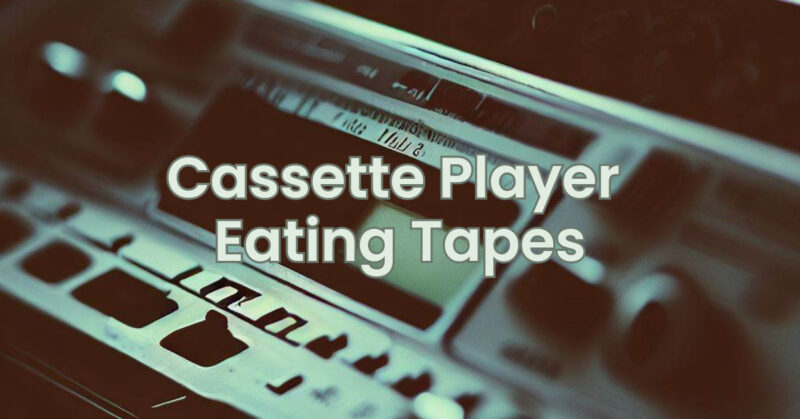Cassette players have been a popular medium for audio playback and recording. However, one frustrating issue that cassette players can encounter is when they “eat” tapes, causing damage to the cassette and rendering it unplayable. This can be caused by a variety of factors, from mechanical issues to tape misalignment. In this troubleshooting guide, we will explore potential causes and provide step-by-step solutions to help you address the problem of a cassette player that eats tapes.
- Check for Obstructions: One common cause of tape eating is the presence of foreign objects or debris in the tape path. Open the cassette player’s compartment and visually inspect the tape path, including the capstan, pinch rollers, and tape heads. Look for any visible obstructions such as loose tape, dirt, or debris. Gently remove any obstructions using a pair of tweezers or a soft cloth. Be careful not to damage any delicate parts during this process.
- Clean the Tape Path: Dirt, dust, or debris in the tape path can interfere with the smooth movement of the tape, causing it to become tangled or snagged. Use a soft cloth or cotton swab slightly dampened with isopropyl alcohol to clean the tape path components, including the capstan, pinch rollers, and tape heads. Gently wipe these components to remove any buildup. Ensure they are completely dry before attempting to play a cassette.
- Inspect the Pinch Rollers: Worn or dirty pinch rollers can contribute to tape eating issues. Look closely at the pinch rollers for signs of wear, flat spots, or a shiny appearance. If the rollers appear worn or dirty, clean them using a cotton swab moistened with isopropyl alcohol. Gently rotate the rollers while cleaning to ensure all sides are thoroughly cleaned. If the pinch rollers are severely worn, they may need to be replaced. Consult the manufacturer’s manual or seek professional assistance for replacement options.
- Adjust the Tape Head Alignment: Misaligned tape heads can cause the tape to veer off its intended path, leading to tape eating problems. Consult the user manual or look for adjustment screws near the tape head assembly. Use a small screwdriver to carefully adjust the azimuth and height of the tape head as per the manufacturer’s instructions. Make slight adjustments and test the player after each adjustment until the tape runs smoothly without getting stuck.
- Check the Belt Tension: Worn or stretched drive belts can cause irregular tape movement, leading to tape eating issues. Open the cassette player and locate the drive belts. Check for signs of deterioration, slipping, or damage. If the belts appear worn, replace them with new ones of the correct size and type. Correct belt tension is crucial for proper tape movement. Consult the manufacturer’s manual or seek assistance from a professional technician for belt replacement and tension adjustment.
- Seek Professional Repair: If the above steps do not resolve the tape eating issue, it may indicate more complex mechanical problems within the cassette player. In such cases, it is recommended to seek professional repair services. Contact a reputable audio equipment repair specialist or the manufacturer’s authorized service center for expert diagnosis and repair options.
Conclusion: Dealing with a cassette player that eats tapes can be frustrating and can potentially damage your beloved cassette collection. By following the troubleshooting steps outlined in this guide, including checking for obstructions, cleaning the tape path, inspecting the pinch rollers, adjusting tape head alignment, and checking belt tension, you can address common causes of tape eating issues. However, if the problem persists, it is best to seek professional repair assistance to ensure the safe and proper functioning of your cassette player. With proper care and maintenance, you can restore the functionality of your cassette player and enjoy uninterrupted playback of your favorite cassette tapes.


